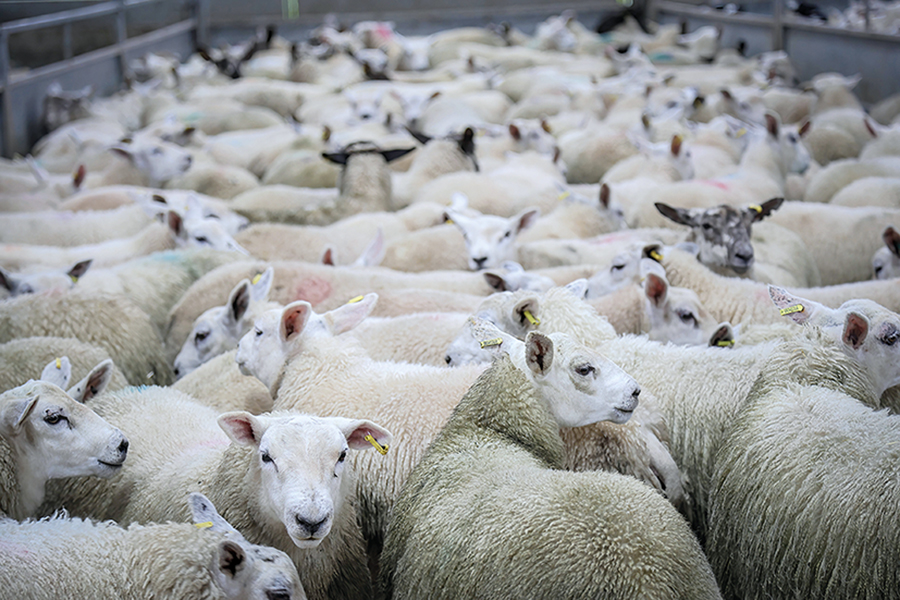Wormer resistance: What can we learn from NZ?
25th July 2024
After working with New Zealand sheep farmers who are battling high levels of wormer resistance, vet Kaz Strycharczyk shares his findings.

A study has revealed that 98% of UK farms tested showed resistance to one or more of the group 1, 2, and 3 wormers (Riddy SF, 2023). This alarming statistic highlights a major problem for the sheep sector, with roundworm infestations being one of the leading causes of production losses in lambs.
While wormer resistance does not seem to be reversible, as an industry we can work together to slow down its development, to help prevent future problems and ensure our current wormer classes continue to work into the future.
There are several ways of slowing resistance building, but there is no one silver bullet. This is why it is valuable to look to other countries and learn from their experiences. One particularly instructive place to look is New Zealand, as farmers currently face a severe crisis with wormer resistance, for several different reasons.
The rise of wormer resistance
Following changes to New Zealand’s agricultural policy that put pressure on farmers to maximise efficiency and productivity, many sheep farms were lost. For those that remained, the need to cut costs while making full use of farmland led to increased sheep numbers and higher stocking densities – inevitably escalating parasite pressures.
As a result, some farms experienced a build-up of wormer resistance, due to multiple factors including overuse and misuse of anthelmintics, absence of wormer group rotation and under-dosing, often through lack of understanding rather than malpractice.
Annual resistance studies carried out by Gribbles Veterinary have shown that the resistant worms in NZ are the same families that are causing problems in the UK – Teledorsagia and Trichostrongylus – demonstrating we are at the same risk of resistance development.
Some Kiwi worm management regimes still use a suppressive approach where lambs were treated every 28 days. To overcome resistance, farmers have increasingly used combination products of dual or triple-active ingredients. These are often sold in large quantities without much veterinary oversight, and intense competition amongst vendors has kept the cost of these products relatively low; both contributing to overuse.
In terms of resistance development levels in NZ, studies from the past two years have shown the South Island experienced a 50% increase in wormer resistance to a triple active when compared to the figures in the previous year. This trend was replicated in the North Island where a 15% increase in resistance was recorded (McKenna P, 2016).
To avoid a similar scenario being replicated at home, a robust worm management plan is essential to tackle resistance.
Best practice
Regular faecal egg counting (FEC) will help identify worm burdens and post-drench FEC testing can help assess the efficacy of anthelmintic treatments within the flock. In addition, faecal egg count reduction tests (FECRT) through the vet can identify patterns of resistance, allowing farmers to make changes when potential resistance is highlighted. In New Zealand, when resistance is detected, larval cultures can be used to give more detail – for instance, which species of worm is resistant to which group of wormer.
A key part of managing the resistance puzzle is the introduction of the newer groups, to clear out resistant worms in mid-late season lambs, and incoming quarantined stock. However, in 2022, a survey showed just 19% of farms used a group 4 or 5 wormer in their worming regimes.
Administering a break dose of a group 4 wormer can help slow the development of resistance by eliminating worms that have survived groups 1, 2 or 3 treatments. The introduction of an annual dose of a group 4 wormer has been proven to help slow the development of resistance to groups 1, 2 and 3 (Leathwick DM et al, 2009).
It is also useful to try and avoid grazing lambs on high-risk pasture, such as those which have previously held lambs in the current season. A proactive grazing plan can help tackle wormer resistance, as the lifecycle of the host-specific parasites is disrupted by a different species grazing the pasture. Using cattle to ‘clean up’ after sheep, or vice versa, is a fundamental tool for managing both parasite and pasture quality. Older, more parasite resistant sheep (e.g. ewes) may be used for the same purpose with careful planning.
By adopting a comprehensive approach incorporating newer wormer groups, such as group 4, coupled with regular FEC and weighing, and importantly proactive grazing management, UK farmers can safeguard their flocks and ensure sustainable sheep farming for the future.
Read more livestock news
